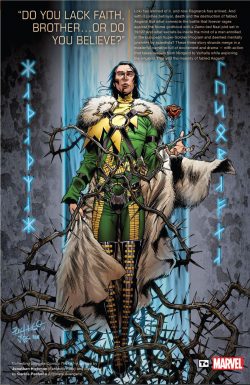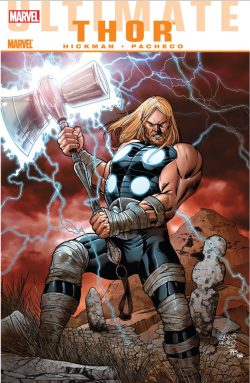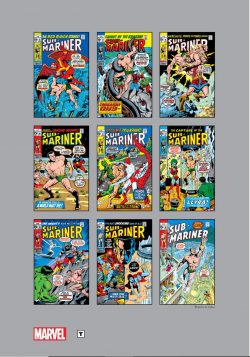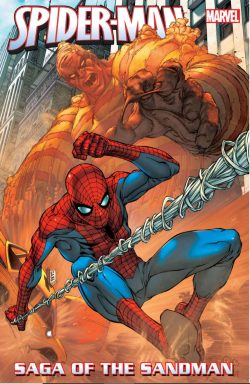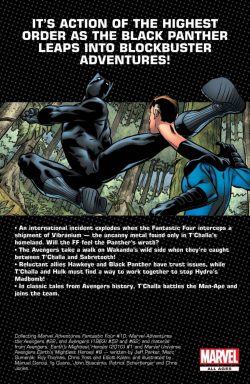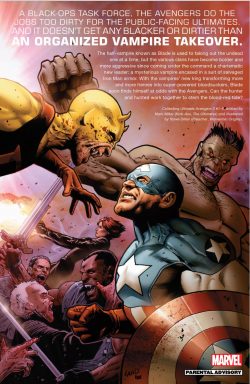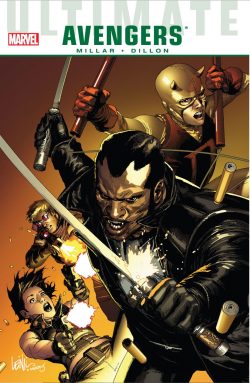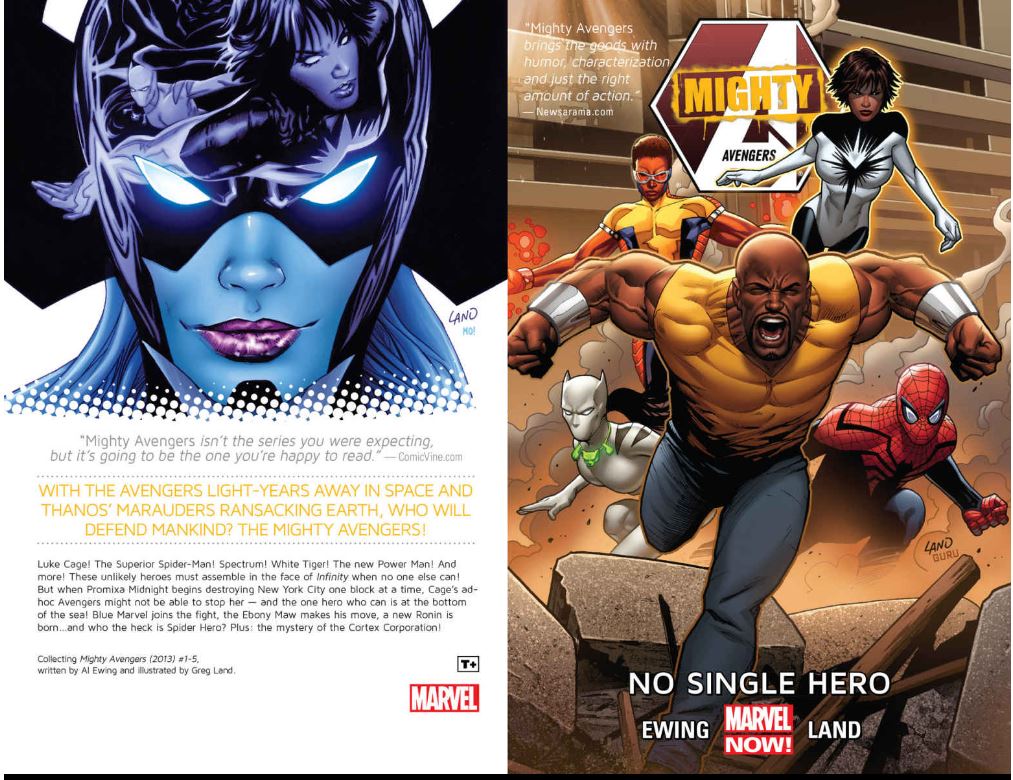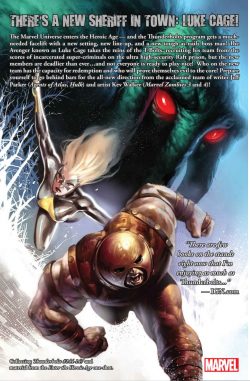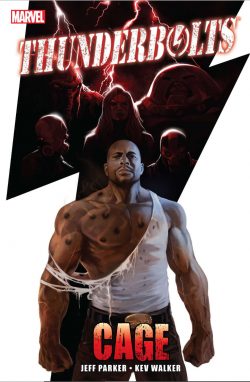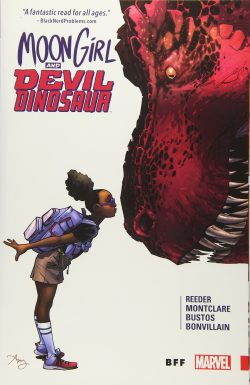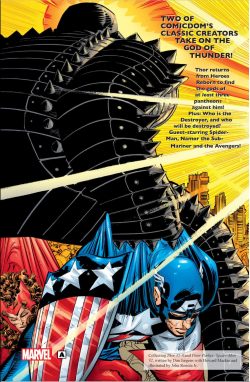

By Stan Lee & Don Heck, Roy Thomas, Len Wein, Steven Grant, Mark Gruenwald, David Michelinie, Mike Friedrich, J.M. DeMatteis, Scott Edelman, Roger Stern, Charlie Boatner, Jack Kirby, Gene Colan, Sal Buscema, John Byrne, Carmine Infantino, Greg LaRoque, George Evans, Jimmy Janes, Paul Neary, Joe Staton, Dick Ayers, Mike Netzer, Trevor Von Eeden, Eliot R. Brown & various (MARVEL)
ISBN: 978-0-7851-3723-8 (TPB/Digital edition)
Clint Barton is probably the world’s greatest archer: swift, bold, unerringly accurate and augmented by a fantastic selection of multi-purpose high-tech arrows. Other masked bow persons are available… including a young, female Hawkeye…
Following an early brush with the law and as a reluctant Iron Man villain, Barton reformed to join the Mighty Avengers, serving with honour and distinction, despite always feeling overshadowed by his more glamorous, super-powered comrades.
Long a mainstay of Marvel continuity and probably Marvel’s most popular B-list hero, the Battling Bowman has risen to great prominence in recent years, boosted by his film and television incarnation.
This brash and bombastic collection – available in paperback and digital formats – re-presents breakthrough miniseries Hawkeye #1-4, the major early appearances from Tales of Suspense #57, 60, 64 and momentous moments from The Avengers #16, 63-65, 189, 223: supplemented by outings in Marvel Team-Up #22, 92, 95; Captain America #317 and pertinent material from Marvel Tales #100; Marvel Fanfare #3, 39 and Marvel Super Action #1, all chronologically covering September 1964 to August 1988. It should be noted that some of these tales feature his occasional wife and partner Mockingbird…
It naturally begins with a blockbusting debut from Tales of Suspense #57. In ‘Hawkeye, the Marksman!’ – by Stan Lee & Don Heck – as the villainous Black Widow resurfaces to beguile an ambitious and frustrated former carnival performer-turned-neophyte-costumed vigilante. She convinces him to attack her archenemy Iron Man and, despite a clear power-imbalance, the amazing ingenious archer comes awfully close to beating the Golden Avenger…
Natasha Romanoff (sometimes Natalia Romanova) was a Soviet Russian spy who came in from the cold to become one of Marvel’s earliest female stars. She started life as a svelte, sultry honey-trap during Marvel’s early “Commie-busting” days, periodically targeting Tony Stark and battling Iron Man. She was subsequently redesigned as a torrid, tights-&-tech super-villain before defecting to the USA, falling for an assortment of Yankee superheroes – including Hawkeye, Daredevil and Hercules – and enlisted as an agent of S.H.I.E.L.D., setting up as a freelance do-gooder before joining (and occasionally leading) The Avengers.
Tales of Suspense #60 (December 1964, by Lee, Heck & Dick Ayers) featured an extended plotline with Stark’s “disappearance” leading to Iron Man being ‘Suspected of Murder!’. Capitalizing on the chaos, lovestruck Hawkeye and the Widow again attacked the Armoured Avenger, but another failure led to her being recaptured and re-educated by enemy agents…
Abruptly transformed from fur-draped seductress into gadget-laden costumed villain, she resurfaced in #64 (April 1965 by Lee, Heck & Chic Stone), again steering the bewitched bowman into attacking her enemy. Her final failure led to huge changes…
Most importantly, one month later, Avengers #16 saw the superstar team split up following climactic battles against Zemo and the Masters of Evil. Laid out by Jack Kirby & embellished by Ayers, ‘The Old Order Changeth!’ introduced a dramatic change of concept for the series. As Lee increasingly wrote to the Marvel’s unique strengths – tight continuity and strongly individualistic characterisation – he found juggling individual stars in their own titles in addition to a combined team episode every month was almost impossible…
As Captain America and substitute sidekick Rick Jones fight their way back to civilisation, the Avengers institute changes and seek out their own replacements. The big-name stars resigned making way for three erstwhile villains: Quicksilver, the Scarlet Witch and Hawkeye, all reformed, reenergised and hungry for redemption…
The Straightshooter became a mainstay and backbone of the team, but in Avengers #63, survived a battle epiphany that triggered a big change after returning from a mission in Wakanda.
Beginning a 3-part tale illustrated by Gene Colan & George Klein ‘And in this Corner… Goliath!’ saw Barton abandon the arrow schtick in favour of true super-powers as Roy Thomas finally gave the enigmatic Avenger an origin.
The first chapter was part of a broader tale: an early crossover experiment intersecting with the 14th issue of both Sub-Mariner and Captain Marvel, wherein a coterie of cerebral second-string villains combined to conquer the world by stealth…
Within the Avengers portion of proceedings, Hawkeye revealed his civilian identity for the first time. He was ex-circus performer Clint Barton and shared his origins before forsaking bow and trick-arrows to become a size-changing hero using Pym particles. He then adopted the now-vacant name Goliath to save the Black Widow.
In #64’s ‘Like a Death Ray from the Sky!’ he reluctantly reunited with his mobster brother Barney Barton and led the team against a terror satellite scheme cooked up by Egghead before #65 (inked by Sam Grainger) saw him attacked by his old enemy/mercenary mentor the Swordsman in ‘Mightier than the Sword?’
Jumping to June 1974 – a time when the archer pursued a solo career – Marvel Team-Up #22 (by Len Wein, Sal Buscema & Frank Giacoia) unleashes ‘The Messiah Machine!’ as Battling Bowman and Amazing Spider-Man frustrate deranged computer Quasimodo’s ambitious if absurd mechanoid invasion of Earth.
Cover-dated February 1979, reprint title Marvel Tales #100 concealed ‘Killers of a Purple Rage!’: a new short tale by Scott Edelman, Michael Netzer & Terry Austin which finds time-displaced Two-Gun Kid and Hawkeye battling each other and then mind controlling menace Killgrave the Controller…
Avengers #189 (November 1979, by Steven Grant, John Byrne & Dan Green) then reveals how official reservist Hawkeye get a day job at Cross Technological Enterprises in ‘Wings and Arrows!’ Before long, he’s earning every penny as the new security chief by battling alien avian interloper Deathbird…
For Marvel Team-Up #92 (April 1980) Grant, Carmine Infantino & Pablo Marcos reunite Archer and Arachnid after a new iteration of Mr. Fear steals CTE technology and almost cripples the heroes with ‘Fear!’ after which vigilante activist El Águila raids the corporate citadel in a tight tale from Marvel Fanfare #3 (July 1982). Crafted by Charlie Boatner, Trevor Von Eeden & Josef Rubinstein, ‘Swashbucklers’ at last opens Hawk’s eyes to what his bosses are truly like and what they do with their discoveries…
Cover-dated September 1982, Avengers #223 talked ‘Of Robin Hoods and Roustabouts’. Devised by David Michelinie, Greg LaRocque, Brett Breeding & Crew, it saw reinstated Avenger Clint Barton join Ant-Man Scott Lang, when he and daughter Cassie attend a circus and stumble into a clash with skills-mimic Taskmaster to extricate an old friend from the maniac’s clutches and influence.
Hawkeye was always a team player and unlucky in love, but that was all about to change. In the interests of complete clarity, this collection pops briefly back to 1976 for some classy comics context and the first (costumed) appearance of occasional wife and frequent paramour Bobbi “Mockingbird” Morse as first seen in January 1976.
Preceded by a Howard Chaykin frontispiece from monochrome Marvel Super Action #1, former Ka-Zar romantic interest Dr. Barbera Morse was reinvented by Mike Friedrich, George Evans & Frank Springer in ‘Red-Eyed Jack is Wild!’ Adopting unwieldy nomme de guerre Huntress, skilled combat operative Morse devotes herself to cleaning up corruption inside S.H.I.E.L.D., no matter what the cost…
Huntress became Mockingbird in Marvel Team-Up #95 (July) in a smart thriller by Grant, Jimmy Janes & Bruce Patterson. ‘…And No Birds Sing!’ ended the long-extant S.H.I.E.L.D. corruption storyline as Morse invited Spider-Man to join forces and expose the true cancer at the heart of America’s top spy agency…
All this was laying the groundwork for something truly game-changing…
Written and drawn by the hugely underrated and much-missed Mark Gruenwald, assisted by inkers Brett Breeding & Danny Bulanadi and running from September-December 1983, Hawkeye #1-4 was one of Marvel’s earliest miniseries and remains one of the very best and most eventful adventures of the Ace Archer. Much like the character himself, this project was seriously underestimated when first released. Most industry pundits and the more voluble fans expected very little from a second-string hero drawn by a professional writer. Guess again, suckers!
‘Listen to the Mockingbird’ sees Clint still moonlighting as security chief for electronics corporation CTE when he captures a renegade S.H.I.E.L.D. agent. She reveals that his bosses are all crooks, secretly involved in shady mind-control experiments.
After some initial doubts, in ‘Point Blank’ Barton teams with the svelte and sexy super-agent to foil the plot, gaining in the process a new costume and an instant rogues’ gallery of archfoes such as Silence, Oddball and Bombshell by third chapter ‘Beating the Odds’…
As the constant hunt and struggle wears on, Barton succumbs to – but is not defeated by – a life-changing physical injury leading to permanent disability. He also impetuously marries in explosive conclusion ‘Till Death us do Part…’ wherein the sinister mastermind behind everything is finally revealed and summarily dealt with.
In those faraway days both Gruenwald and Marvel Top Gun Jim Shooter maintained that a miniseries had to deal with significant events in a character’s life, and this bright and breezy, no-nonsense, compelling and immensely enjoyable yarn certainly kicked out the deadwood and re-launched Hawkeye’s career.
In short order from here the bowman went on to create and lead his own team: The West Coast Avengers, gained a regular series in Solo Avengers/Avengers Spotlight and his own titles, consequently becoming one of the most vibrant and popular characters of the period and today as well as a modern-day action movie icon…
However, there are still treats to share
Next here is fun foray from Captain America 317 (May 1986) by Gruenwald, Paul Neary & Dennis Janke. In ‘Death-Throws’ Hawkeye and Mockingbird hunt circus-themed villains and their boss Crossfire with the Sentinel of Liberty reduced almost to a spectator and proud dad watching the kids grow up…
The comics wonderment concludes with a little-seen story from Marvel Fanfare #39 (August 1988). Courtesy of J.M. DeMatteis, Joe Staton & Kim DeMulder, ‘The Cat’s Tale’ finds the Ace Archer seriously off his game until taken on a vision-quest by Navajo shaman Jesse Black Crow to confront the predatory feline spirit that is poisoning his existence…
Packed with terrific tales of old-fashioned romance, skulduggery and derring-do, this book comes with extras including the Gil Kane cover to Marvel Triple Action #10, text articles on the Hawkeye miniseries from Marvel Age #6; the event’s 1983 house ad by Gruenwald & Brett Breeding and the covers and introduction from the 1988 TPB collection (and three subsequent re-releases), plus text pieces from Archie Goodwin, & Gruenwald.
Also on view are contemporaneous info pages from the Official Handbook of the Marvel Universe, about Hawkeye, Mockingbird, Death-Throws, Ringleader, Oddball, Bombshell, Tenpin and KnickKnack, plus diagrammatic cutaways by Eliot R. Brown, detailing the secrets of ‘Hawkeye’s Skymobile’, ‘Hawkeye’s Quiver and Bows’ and ‘Mockingbird’s Battle-Staves’.
This is a no-nonsense example of the straightforward action-adventure yarns that cemented Marvel’s reputation and success and a collection to enhance any Fights ‘n’ Tights fans’ place of honour on the bookshelf.
© 2021 MARVEL.
